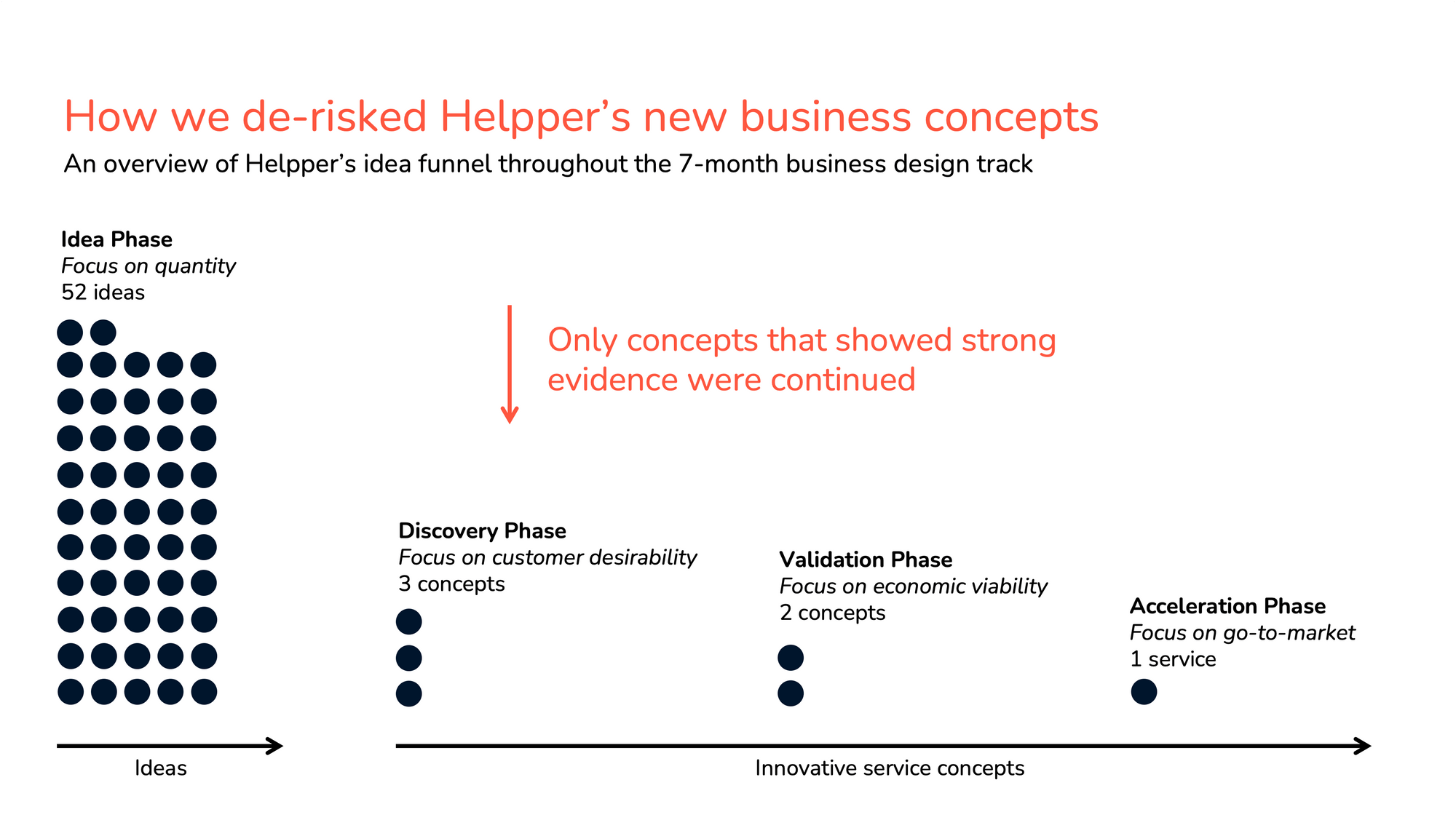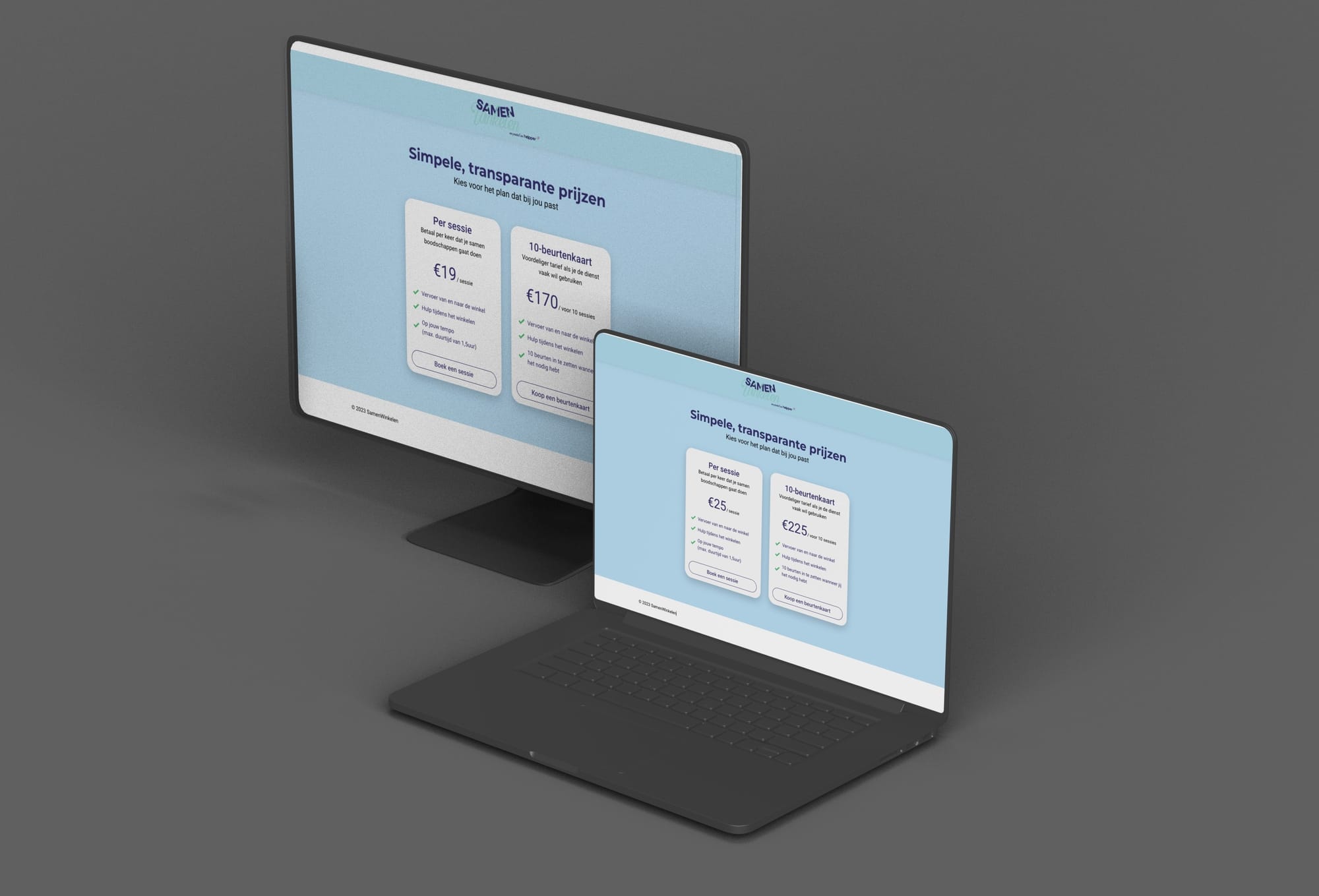In the first phase of desirability, the goal was to understand customer motivations, needs, behaviors and pains. We conducted 100 phone and video interviews to distill the most pressing needs and assistance requests. We learned that aligning expectations around specific tasks, flexibility, and trust were the most important factors for a successful match. We also found that people who recently retired were more likely to commit to longer engagements due to a sense of belonging, time availability, and interest in new social connections.
Next, we conducted a quantitative analysis of the most requested tasks in the last few years. The top 3 most common needs were companionship, grocery shopping, and transportation. After generating 52 different service concepts to solve customer needs and pains, we prioritized the different ideas on social impact, scalability, and viability potential. We developed a shortlist of 3 high-potential business ideas: a social grocery shopping experience, personal transportation to medical appointments, and a personal training program for brain health.
We tested the business potential of these concepts by launching online campaigns and landing pages to test different value propositions and learn how customers engaged with them. All 3 offerings were validated with impressive click rates ranging from 15% to 50%, indicating strong customer interest in the services.
Viability: Creating a social service that is affordable, yet viable
In the second phase of viability, the aim was to explore how we could best create, capture, and exchange value in the ecosystem of Helpper and their customers. We explored different revenue models for the offerings with the highest conversion rates and developed a high-level business case. Should the service be a one-off fee? A subscription? A pass? Productized with add-ons?
Through A/B testing, we analyzed the willingness to pay and business models to refine the business case. One service was invalidated for being economically unsustainable, and we continued with the service with a strongly positive business case.
![[object Object]](https://umsousercontent.com/lib_SgVrTchGksgQdBiV/5to2tmehoshuavn2.png?w=306)




